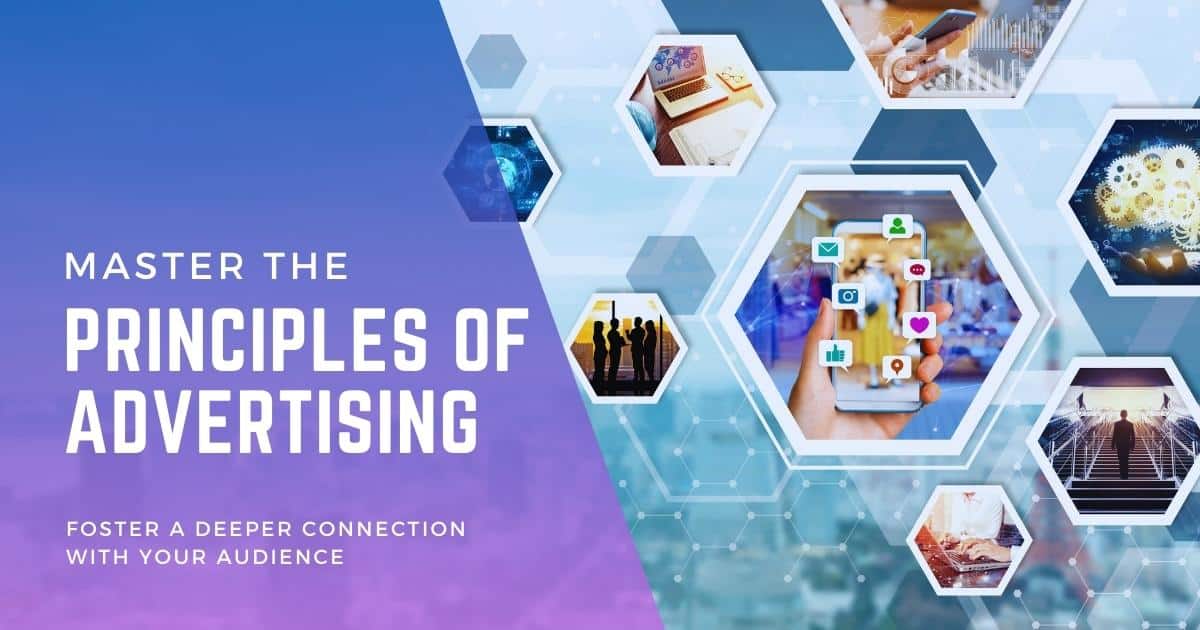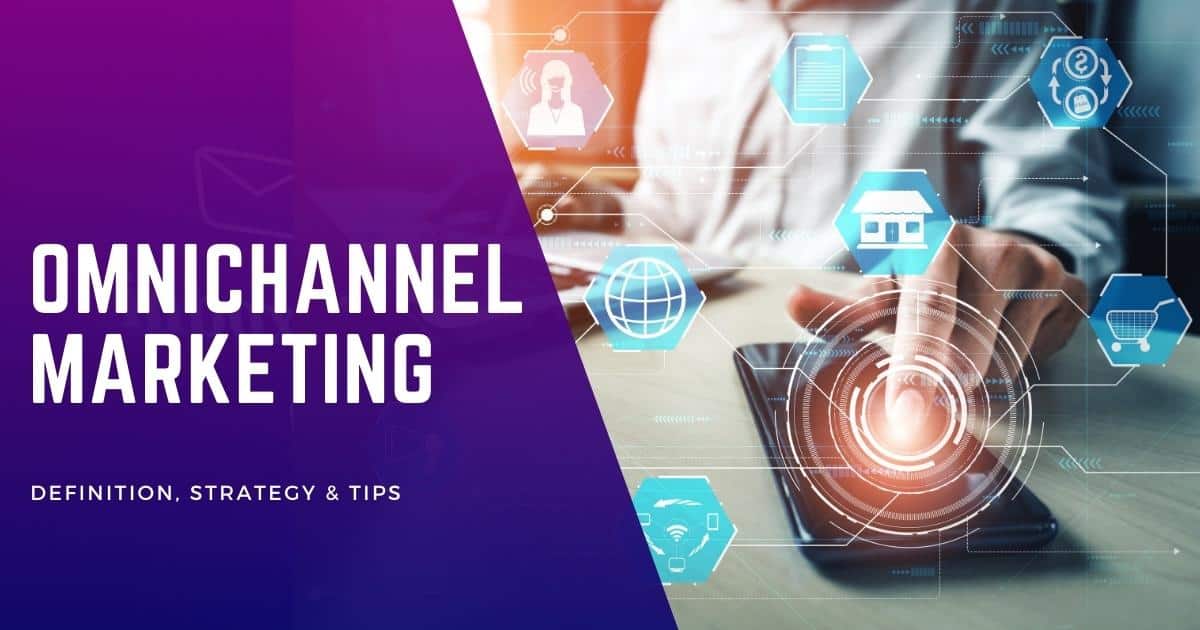Guerrilla Marketing is like the Swiss Army knife of the advertising toolkit, ready to cut through the noise where traditional methods fall short. It’s essentially a creative and cost-effective way to get your brand noticed, using unconventional strategies to engage your audience directly.
Let’s talk challenges. Among the hurdles like campaign execution and measuring ROI, the most daunting can be capturing authentic audience engagement. As someone with extensive hands-on experience in digital marketing, I’ve tackled these challenges head-on, crafting unique and effective guerrilla marketing strategies. Rest assured, you’ll get some actionable insights to tackle these obstacles.
Why should you care about Guerrilla Marketing? Simple. It gives you the competitive edge you need in a saturated market, providing you with innovative ways to connect with your audience. You’re not just a blogger, a marketer, or an entrepreneur—you’re a brand, and this is your tool for making meaningful connections. So, let’s cut to the chase and get into the nitty-gritty of making Guerrilla Marketing work for you.
Key Takeaways
- Discover innovative, cost-effective ways to market your brand with guerrilla marketing strategies.
- Master the various types: ambient, street, buzz, experiential, stealth, alternative media, and viral marketing.
- Understand the high-reward, high-risk nature: generate buzz but know the legal and ethical considerations.
- Find effective tactics to evoke emotional responses and boost brand recognition.
- Identify how guerrilla marketing can be a game-changer for small businesses and startups due to its low-cost nature.
What Is Guerilla Marketing?
Guerilla marketing is an unconventional, creative strategy to achieve maximum exposure for a product or service with a minimal budget. It leverages public spaces, high-energy interactions, and surprise elements to generate buzz and engagement, making it a cost-effective method for small businesses and startups.
Definition And Examples
Guerilla marketing utilizes unconventional advertising techniques to create buzz and engage the target audience, resulting in a memorable brand experience.
The primary focus is on innovation and creativity while keeping costs low, often leveraging public spaces or events as platforms for interaction.
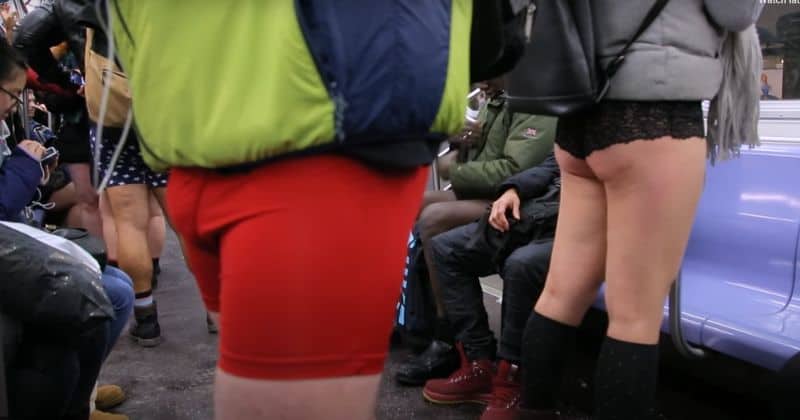
For example, during the 2007 “No Pants Subway Ride” event organized by Improv Everywhere, Axe Body Spray strategically placed advertisements inside subway cars without seats – ensuring their ads received maximum attention from standing commuters.
Another remarkable campaign was Volkswagen’s “Piano Staircase,” which transformed a staircase into a working piano with each step representing different musical notes; this initiative encouraged people to use stairs over escalators and left lasting impressions of VW’s commitment to promoting healthy lifestyles.
Guerilla Marketing: Features And Benefits
Guerilla marketing presents a unique opportunity for digital marketers to capitalize on its innovative and unconventional strategies. Some key features and benefits of this approach include:
- Unconventional advertising: Guerrilla marketing uses creative, nontraditional tactics to capture the attention of your target audience unforgettably.
- Innovative marketing: By implementing out-of-the-box ideas, businesses can make a lasting impression on their potential customers.
- Low-cost promotion: Many guerrilla marketing techniques require minimal financial investment, making them a cost-effective solution for small businesses or startups.
- Emotion-evoking strategies: These campaigns are designed to elicit strong emotions from the audience, creating memorable experiences that help reinforce brand messages.
- Shocking audience tactics: Audiences are often surprised by these tactics, leading them to discuss and share the campaign organically, increasing visibility and reach.
- Publicity generation: Unique and novel guerrilla marketing campaigns often generate buzz and media coverage, driving additional awareness for your brand.
- Brand awareness tactics: By standing out from traditional advertising methods, guerrilla marketing can significantly boost brand recognition among potential customers.
- Unusual customer interactions: Engaging consumers through unexpected encounters creates a more personal connection with your brand.
- Creative branding: Guerrilla marketing is an excellent way for brands to showcase their personality and creativity while cultivating consumer interest.
- Nontraditional marketing tactics: Employing unconventional methods allows businesses to stand out in today’s crowded marketplace by creating memorable moments that leave a long-lasting impact on potential customers.
Utilizing these features effectively allows digital marketers to create successful guerilla marketing campaigns that leave lasting impressions on their target audiences while maximizing return on investment (ROI) for their advertising budgets.
Types of Guerilla Marketing
Types of guerilla marketing include ambient advertising, street marketing, buzz marketing, experiential marketing, stealth marketing, alternative media, and viral marketing.
Ambient Advertising

Ambient advertising, a popular form of guerilla marketing, involves promoting a brand or product in unconventional and unexpected locations. This creative strategy aims to captivate audiences by taking advantage of the element of surprise and presenting advertisements where they least expect them.
For instance, consider the notable ambient campaign by Axe Body Spray, where they placed decals on bathroom mirrors in bars and clubs that showcased beautiful women appearing to be peeking over men’s shoulders when looking into the mirror.
This innovative approach generated buzz around their product and created a memorable experience for their target demographic.
Street Marketing
Street marketing is a type of guerrilla marketing that focuses on using unconventional methods to market a brand. This method relies heavily on capturing the attention of passersby and making an impression through creativity and innovation.
Examples include things like chalk art or branded street installations that attract attention, generate social media buzz, and increase brand exposure.
A great example of this was when Spotify used chalk drawings in major cities to advertise their services: these simple yet effective pieces generated quite a lot of interest online without costing them much money.
Buzz Marketing
Buzz marketing is a type of guerrilla marketing that focuses on sparking conversation and generating word-of-mouth promotion around a product or brand.
It involves creating excitement, anticipation, and intrigue around the brand through unconventional tactics such as social media campaigns or viral videos. Buzz marketing aims to get people talking about the product or brand by using creative strategies that are both memorable and shareable.

Examples of successful buzz marketing include Old Spice’s viral “The Man Your Man Could Smell Like” campaign, which generated millions of views on YouTube, or Apple’s annual iPhone launches that generate long lines outside their stores before the official release date.
Experiential Marketing
Experiential marketing is a unique and engaging strategy that creates memorable customer brand experiences. Experiential marketing encourages audience participation and active engagement rather than simply advertising a product or service.
This type of guerrilla marketing often takes place at events or through immersive installations that allow customers to interact with the brand in fun and creative ways.
Companies like Red Bull and Nike have successfully used experiential marketing to create buzz around their products, with campaigns like the Red Bull Stratos Jump and Nike’s interactive “FuelBox.”
Stealth Marketing
Stealth marketing is a guerilla marketing campaign targeting customers through subtle and creative methods. Unlike traditional advertising, where products or services are directly promoted to consumers, stealth marketing aims to promote brands in new channels such as movies or TV series.
Product placement is an example of stealth marketing, where popular TV shows or films feature actors visibly using a brand-name product.
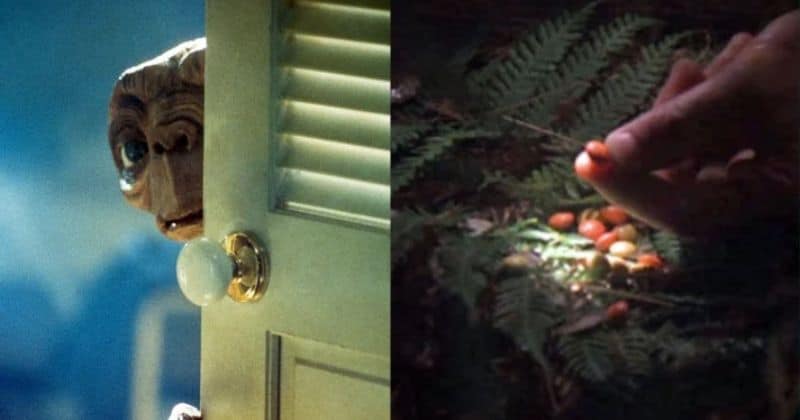
One successful example of stealth marketing is when Hershey’s “Reese’s Pieces” candy was featured prominently in the blockbuster movie “E.T.” The film helped boost sales for Reese’s Pieces by 65%, showing the effectiveness of integrating a brand into entertainment media.
In today’s world, where consumer behavior has shifted toward ad aversion, companies need new tactics to reach their target audience effectively.
Alternative Media
Alternative media is guerrilla marketing that uses unusual and unexpected mediums to promote products or services. This can include advertising on unconventional surfaces like sidewalks, buildings, or even people’s bodies.
One creative example of alternative media in action is when Snickers used 3D street art to transform an ordinary bus stop into a football stadium during the World Cup.
By creating an interactive public space for soccer fans to enjoy while waiting for the bus, Snickers could effectively market its product in a way that resonated with its target audience.
Viral Marketing
Viral marketing is a powerful form of guerrilla marketing that uses digital platforms to encourage people to share information about a product or service with their networks.
By creating catchy, memorable content that resonates with audiences, businesses can leverage the power of social media and other online channels to spread brand awareness at lightning speed.
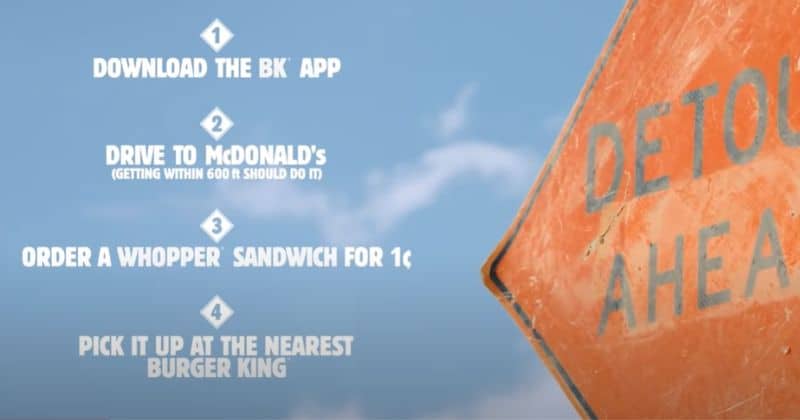
Some examples of successful viral marketing campaigns include Burger King’s “The Whopper Detour,” which offered customers a 1-cent Whopper if they ordered through their mobile app while within 600 feet of a McDonald’s location.
Another example is the ALS Association’s “Ice Bucket Challenge,” which raised millions for charity by encouraging participants to dump buckets of ice water on themselves and then nominate friends to do the same.
Examples Of Successful Guerilla Marketing Campaigns
The Blair Witch Project, Red Bull’s Stratos Jump, and Kit Kat’s “Have a Break, Have a Kit Kat” are examples of successful guerilla marketing campaigns that have captured audiences’ attention – read on to discover more!
The Blair Witch Project
One of the most successful guerilla marketing campaigns in the film industry was The Blair Witch Project. This low-budget horror movie broke records and became a case study in viral marketing thanks to its innovative approach.
The film’s producers blurred the lines between truth and fiction, creating an online buzz that exploited internet communication channels to deceive the public. By positioning their product as real-found footage, they created hype that drew audiences into theaters across America, generating millions in profit for independent filmmakers.
IKEA’s “Everyday Fabulous”

One standout example of a successful guerilla marketing campaign is IKEA’s “Everyday Fabulous” campaign. Launched in 2006, the campaign involved guerilla installations of furnishings around the city, such as couches in bus shelters.
The aim was to showcase IKEA furniture in everyday settings and demonstrate the brand’s quality and affordability. This creative and original approach generated significant buzz and cemented IKEA’s reputation for unconventional marketing strategies.
The campaign’s success has been attributed to its ability to subvert expectations and engage audiences on a personal level by incorporating an unexpected element into their daily routine.
Red Bull’s Stratos Jump
Red Bull’s Stratos Jump is a prime example of how unusual marketing tactics can drive success. The event involved Austrian skydiver Felix Baumgartner jumping from a helium balloon at the edge of space, breaking several world records in the process.
Throughout the campaign, Red Bull leveraged its sponsorship of extreme sports to create buzz and virality across social media platforms, attracting millions of views on YouTube and other online channels.
Coca-Cola’s “Small World Machines”

One of the most successful guerilla marketing examples is Coca-Cola’s “Small World Machines” campaign. This campaign aimed to promote peace and understanding between India and Pakistan, two nations with a long-standing conflict.
The campaign involved setting up vending machines in both countries equipped with cameras and screens, allowing people on opposite sides to communicate and interact in real time.
The “Small World Machines” campaign was innovative and socially impactful. It received widespread attention from mainstream media outlets worldwide, increasing Coca-Cola’s brand awareness and visibility while promoting cultural exchange.
Kit Kat’s “Have A Break, Have A Kit Kat”
Kit Kat’s “Have a Break, Have a Kit Kat” is an excellent example of a successful guerilla marketing campaign. The slogan has been around for decades and is still relevant today.
It encourages consumers to take a break and enjoy life’s simple pleasures, such as taking time off work or studying.
The tagline has become part of popular culture and is used by brands across various industries in their advertising campaigns. Kit Kat’s success lies in its unique selling proposition– providing customers with a delicious chocolate treat and promoting self-care through taking breaks to unwind.
Oreo’s “You Can Still Dunk In The Dark” Tweet
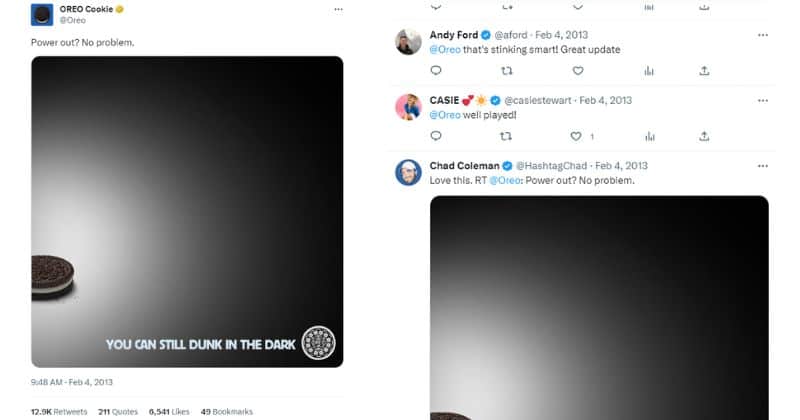
During Super Bowl XLVII, Oreo’s “You Can Still Dunk in the Dark” tweet became a viral sensation and an example of successful guerilla marketing. The tweet featured a dimly lit image of an Oreo cookie with the caption, “You can still dunk in the dark.”
In just a matter of hours, the tweet was retweeted almost 15,000 times, and Oreo’s Twitter following increased by about 8,000.
Airbnb’s “Van Gogh’s Bedroom” Campaign
Airbnb’s “Van Gogh’s Bedroom” campaign is often cited as a great example of guerilla marketing. The campaign involved creating an exact replica of Van Gogh’s bedroom and making it available for rent on Airbnb.
The campaign was part of Airbnb’s overall strategy to boost brand visibility and growth. It was a clever way to show off the range of unique properties that Airbnb offers while also tapping into people’s love for art and culture.
Benefits Of Guerilla Marketing
Guerilla marketing offers increased brand awareness and visibility, a creative advertising approach, and is cost-effective for small businesses – learn more about the benefits of this unconventional marketing strategy in our upcoming post.
Increased Brand Awareness And Visibility
One of the key benefits of guerilla marketing is its ability to increase brand awareness and visibility. By utilizing unconventional, creative tactics that differ from traditional advertising methods, businesses can capture the attention of potential customers more engagingly.
This type of promotion can lead to greater buzz around the product or service offered and increased word-of-mouth recommendations. Successful examples include Coca-Cola’s “Small World Machines” campaign, which brought together individuals from India and Pakistan through a vending machine experience, or Airbnb’s “Van Gogh’s Bedroom” campaign, which allowed guests to stay overnight in a replica of Van Gogh’s bedroom painting.
In addition, guerilla marketing is often more cost effective than traditional advertising channels such as TV commercials or print ads. This aspect allows smaller businesses with limited resources to compete and gain a larger market share by creating memorable customer experiences without breaking the bank.
Creative Approach To Advertising
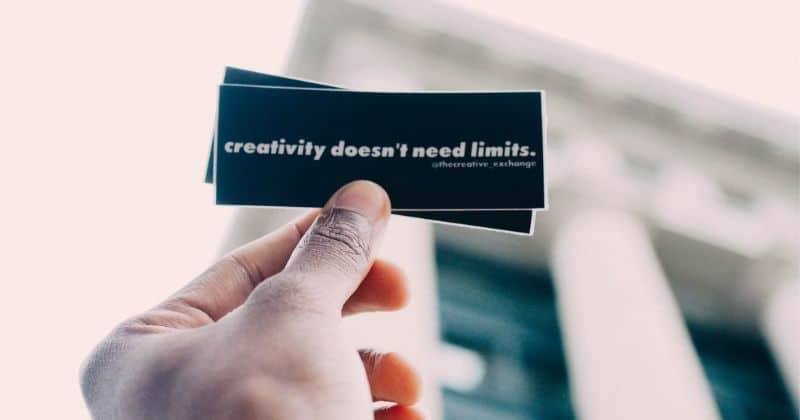
Guerilla marketing is all about bringing a fresh and unique approach to advertising. Rather than relying on traditional advertising methods, guerilla marketing campaigns focus on using creative promotion techniques that grab attention and differentiate brands from the competition.
This involves developing innovative, low-cost, and imaginative tactics, making it an ideal solution for small businesses with limited budgets. This type of marketing aims to evoke a response from the target audience to make them remember the advertised brand or product.
Some examples of successful guerilla campaigns include Red Bull’s Stratos Jump, Coca-Cola’s “Small World Machines” campaign, and Oreo’s “You Can Still Dunk in the Dark” tweet.
By adopting an unconventional but attention-grabbing approach to advertising, companies can create buzz around their products while driving publicity leading to increased brand awareness among relevant audiences.
Cost-effective Solution For Small Businesses
Guerrilla marketing is a highly effective and affordable way for small businesses to get their brand noticed. Traditional advertising methods such as TV, radio, and print ads can be expensive, leaving little room for other promotional activities.
The cost savings of guerrilla marketing come from its unconventional approach that uses creativity rather than big budgets. With guerilla marketing tactics like ambient advertising, street marketing, buzz marketing, or viral campaigns – barriers to entry are low, allowing small businesses with limited resources to compete on the same level as their bigger counterparts.
For instance, When KitKat created a ”Have a break” campaign message out of benches at bus stops and train stations across Europe, it was less expensive but more memorable than running an ad on TV.
Engages Audiences On A Personal Level

One of the primary benefits of guerrilla marketing is the ability to engage audiences on a personal level. Unlike traditional forms of advertising, which rely heavily on broadcasting messages to consumers, guerilla marketing attempts to create real connections with potential customers.
This can be achieved through experiential and immersive campaigns that encourage participation and interaction. For example, Red Bull’s Stratos Jump campaign invited millions of viewers worldwide to watch Felix Baumgartner jump from space in 2012. Coca-Cola’s “Small World Machines” connected people in India and Pakistan through vending machines that projected live video feeds between them.
Risks And Challenges Of Guerilla Marketing
Guerilla marketing can carry risks and challenges, such as potential legal issues and regulations, reputation damage if executed poorly, limited reach and scalability compared to traditional advertising methods, and the importance of maintaining brand consistency across all campaigns.
Reputation Damage
Guerrilla marketing is an effective way to grab attention and promote a brand, but it comes with the risk of reputation damage. The unconventional nature of guerrilla marketing can lead to unintended consequences that may negatively impact the public perception of a brand.
Even minor mistakes or unforeseen events can cause significant reputational damages and make a brand go viral for all the wrong reasons.
It’s crucial for digital marketers using guerrilla tactics to be aware of ethical concerns while creating unique campaigns designed to draw consumer emotions. Brands must carefully balance their ad messages with potential risks with attention-grabbing tactics that could irreversibly damage their image.
Legal Issues And Regulations
One of the biggest challenges with guerilla marketing is ensuring that all activities are legal and compliant with advertising regulations. While some tactics may push the boundaries, avoiding breaking laws or damaging your brand’s reputation is important.
Brands must be aware of potential liability issues and anticipate legal risks before performing guerilla marketing activities. Keeping everything above board and ethical is crucial while capturing attention and engaging audiences personally.
Limited Reach And Scalability

One of the major challenges associated with guerrilla marketing is that it can have limited reach and scalability. Unlike traditional forms of advertising, such as television or print ads, guerrilla marketing campaigns often rely on creating buzz through unconventional means, making it difficult to reach a broad audience.
This is particularly true for small businesses with limited budgets and resources.
For example, Red Bull’s Stratos Jump was one of the most successful guerrilla marketing campaigns in recent years because it appealed directly to its core demographic: extreme sports enthusiasts.
By sponsoring Felix Baumgartner’s space jump and streaming it live online, Red Bull generated significant buzz among its target audience while keeping costs relatively low compared to traditional advertising methods.
However, risks are associated with relying too heavily on guerrilla marketing tactics, such as reduced brand consistency or potential legal issues if not executed properly.
Brand Consistency
Brand consistency is a crucial aspect of successful guerrilla marketing campaigns. When executing unconventional advertising strategies, it’s important to maintain clear brand associations throughout the messaging and creative elements.
For example, KitKat’s “Have a Break, Have a KitKat” campaign utilized urban spaces to create unique advertisements highlighting the product’s message while maintaining consistent branding across all media channels.
The guerrilla approach helped increase the awareness and visibility of the brand in new markets without sacrificing its core identity.
Tips For Developing A Successful Guerilla Marketing Campaign
To develop a successful guerrilla marketing campaign, it is important to identify your target audience and goals, brainstorm creative ideas, plan your budget, and measure and analyze your results – read on for more tips to create an attention-grabbing marketing campaign.
Identify Your Target Audience And Goals
To create an effective guerrilla marketing campaign, it’s essential to identify your target audience and goals. Here are some tips for digital marketers:
- Research your target audience: Conduct market research to understand your potential customers’ demographics, psychographics, and behavior. Identify their pain points, challenges, interests, and preferences that can inform your guerrilla marketing tactics.
- Segment your audience: Divide your target audience into smaller groups based on common characteristics or needs. This will help you tailor your messages and tactics to each group’s specific needs and interests.
- Define your marketing goals: Set clear objectives you want to achieve through the guerrilla marketing campaign. Examples include increasing brand awareness, driving traffic to your website, and generating leads or sales.
- Craft a unique value proposition: Develop a compelling message that communicates the benefits of your product or service creatively and memorably. Use emotional triggers, humor, or surprise to capture your audience’s attention.
- Choose the right tactics: Select unconventional marketing techniques that align with your target audience’s preferences and behaviors. Examples include street art installations, flash mobs, pop-up events, or graffiti advertising.
- Measure and analyze results: Track key performance indicators (KPIs) such as reach, engagement rate, conversions, or ROI to evaluate the success of your campaign. Use data analytics tools such as Google Analytics or social media monitoring platforms to gain insights about the effectiveness of different tactics.
- Iterate and optimize: Based on the results of your analysis, tweak and refine the campaign elements that didn’t work well while scaling up those that proved successful.
By following these tips for identifying target audiences and goals for guerrilla marketing campaigns, thoroughly thought out campaigns can be produced focusing on creative ways to generate high returns on investment with measurable results for small budgets, sometimes even making large companies envious of SMEs doing it smartly!
Brainstorm Creative Ideas
To develop a successful guerrilla marketing campaign, brainstorming creative ideas is crucial. Start by identifying your target audience and considering the brand’s essence.
Once you have a clear idea of who you are trying to reach and what message you want to convey, think of out-of-the-box ways to get their attention.
For example, Red Bull’s Stratos Jump was a highly successful guerrilla marketing campaign that used an innovative approach to promote the brand. The energy drink company sponsored Felix Baumgartner’s freefall from space – breaking multiple records in the process – which captivated audiences worldwide and generated extensive media coverage for Red Bull.
Keep It Legal And Ethical
In developing a successful guerrilla marketing campaign, keeping it legal and ethical is important. Some marketing tactics may seem creative, but if they violate laws or ethical standards, they can negatively affect the brand’s reputation.
For instance, IBM’s “Peace, Love and Linux” campaign in San Francisco was an example of a poorly executed guerrilla marketing strategy that violated city ordinances by defacing public property with spray-painted stencils.
Therefore, while unconventional strategies are essential for engaging audiences and generating buzz around brands’ products or services, it is vital for digital marketers always to consider whether the chosen tactic aligns with their brand values and constitutes acceptable behavior within their targeted consumer base.
Plan Your Budget
One of the critical aspects of developing a successful guerilla marketing campaign is planning your budget. Guerilla marketing typically relies on creative, low-cost strategies that can help small businesses compete with larger and more established competitors.
For instance, several inexpensive but high-impact tactics include creating viral content or leveraging social media channels to reach new audiences. You may also consider executing experiential campaigns to engage customers directly with your brand while reducing traditional advertising overheads.
The key is to be creative and think outside the box while ensuring each tactic fits your budget.
Measure And Analyze Your Results
Measuring and analyzing the success of a guerrilla marketing campaign is crucial to understanding its impact. It’s important to keep track of marketing metrics such as campaign performance, data analysis, and audience engagement levels.
One way to measure success is by tracking social media activity surrounding the campaign, including likes, shares, comments, and overall sentiment. Another important metric to consider is website traffic before and after the campaign launch.
For instance, when Red Bull sponsored Felix Baumgartner’s space jump in 2012, known as Stratos Jump, with a budget of 3 million dollars- they made sure that their targeting was accurate, focusing on their target audience (young adults) on social media sites like YouTube which recorded high views from countries everywhere around the world during live streaming.
Know Your Limits And Capabilities
Knowing your limits and capabilities is crucial when developing a successful guerilla marketing campaign. In other words, understand what you can realistically achieve with the resources, budget, and skills available.
Instead of trying to emulate big brands’ campaigns without considering their scalability and cost-effectiveness for your business’s size and goals, focus on using innovative methods that align with your brand personality and target audience.
A good example is Kit Kat’s “Have a Break” campaign, which leverages public spaces such as benches to convey its punchy message of encouraging people to pause their busy lives and enjoy a sweet break while subtly promoting the product.
Teamwork And Collaboration
Successful guerrilla marketing campaigns require effective teamwork and collaboration between different departments. It’s essential to have a team that can work well together to generate creative ideas, design eye-catching visuals, and execute the plan flawlessly.
For instance, Red Bull’s Stratos Jump campaign involved a team of over 300 specialists working together for five years. This project required engineering and marketing skills to create one of the most daring stunts ever filmed.
The campaign would not have been successful without proper communication and cooperation among this diverse group of experts.
Over to You
Guerrilla Marketing isn’t just another tactic; it’s a real game-changer for anyone looking to boost their brand on a budget. By using cool stuff like viral videos and street signs, you can make people talk about your business without spending tons of money. But hey, be smart about it to avoid legal issues or bad buzz.
So, what’s next? Well, you’ve got the knowledge and tools to make Guerrilla Marketing work for you. Now, it’s time to take action. Try out some low-cost strategies, get creative with your advertising, and see the positive change in your brand reach. Let’s get to it!
FAQ
What are some examples of guerilla marketing?
Guerilla marketing examples include street art or graffiti, flash mobs, viral social media campaigns, and public installations. Notable instances are Red Bull’s stratosphere jump, Coca-Cola’s “Happiness Machine”, and IKEA’s subway station makeover, which spurred significant public engagement and media attention.
How effective is guerilla marketing compared to traditional advertising?
Guerilla marketing can be more effective than traditional advertising, especially for budget-conscious businesses. It often generates significant organic reach and engagement due to its creativity and surprise factor. However, its success depends on precise execution, audience understanding, and a conducive social or physical environment.
Is guerilla marketing legal?
Guerilla marketing is generally legal but can cross legal boundaries if it involves trespassing, defacement of property, or false advertising. Regulations vary by location and nature of the campaign. Therefore, businesses should ensure compliance with local laws and respect for public spaces before initiating guerilla marketing strategies.
What is the main goal of guerrilla marketing?
Guerilla marketing, a term coined by Jay Conrad Levinson in 1984, is an unconventional marketing strategy designed to generate significant buzz about a product or brand. The main goal is to create impactful, memorable interactions that prompt consumers to purchase the product or service or stimulate conversations with potential buyers, often leveraging creativity over a large budget.


